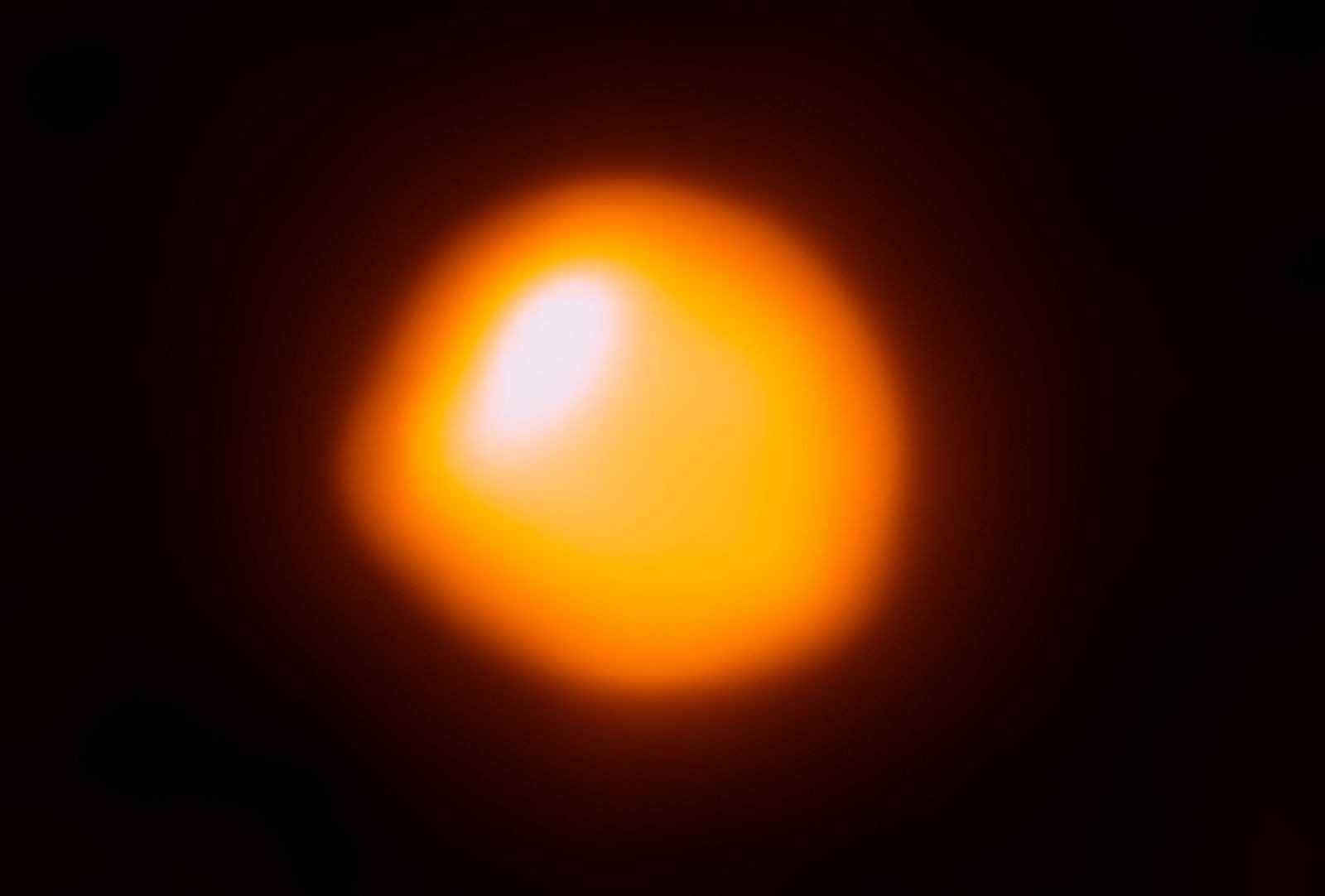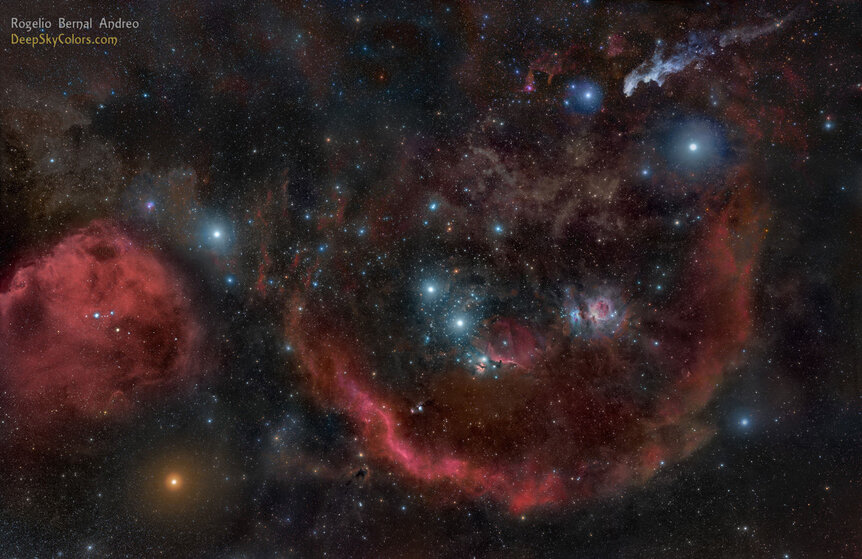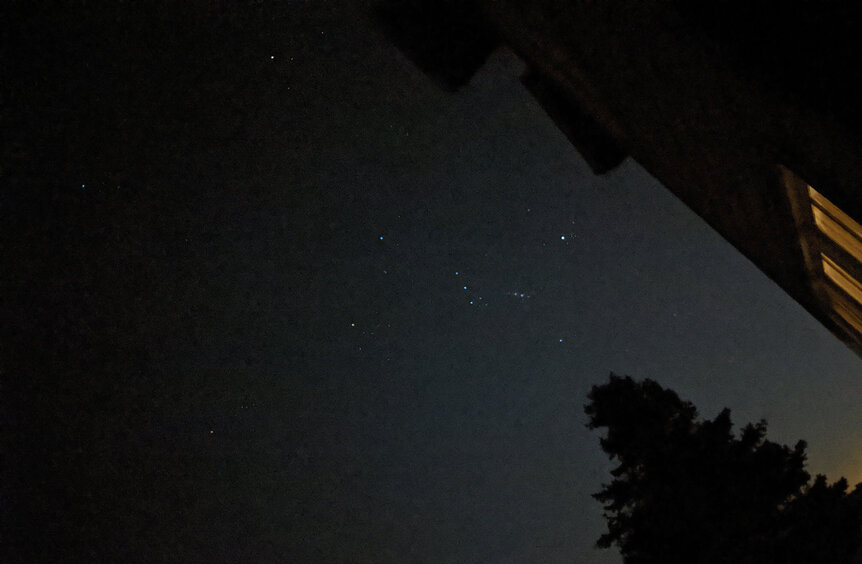Create a free profile to get unlimited access to exclusive videos, sweepstakes, and more!
Don’t panic! Betelgeuse is (almost certainly) not about to explode

Let's get this out of our systems right away: Betelgeuse! Betelgeuse! Betelgeuse!
[Looks around]
Hmmmm, nothing. Maybe I'm spelling it wrong?
Nope. In this case I'm talking about the star, bright and red, that marks Orion's right shoulder (his right, but we see it on his left), a massive and massively luminous red supergiant nearing the end of its life, and that will one day explode as a titanic supernova.
But recently it's been not so bright. Betelgeuse has faded. A lot. It's dropped in brightness by around a factor of two, and it happened fairly rapidly. According to reports, it began dimming in October 2019, and to anyone familiar with Orion it's noticeably dimmer right now even by eye. That's been getting a lot of attention online, in part because people are familiar with the star (thanks in part to the movie), and also because Orion is above the eastern horizon shortly after it gets dark this time of year. And, of course, Betelgeuse is one of the brightest stars in the sky, easily spotted, so lots of people have been able to see its shenanigans.
So should we panic? Is this dimming a precursor to it going kablooie?
No, and no.
First, take a deep breath. Second, reread the title of this article. No, Betelgeuse isn't about to explode. While unusual, this behavior isn't unprecedented. Also, it probably won't go bang for a long, long time.
Here are the particulars: Betelgeuse is indeed a monster, a red supergiant with about 20 times the Sun's mass. That makes it huge, so big it crushes our puny sense of scale: Its radius is something like 600 million kilometers. Replace the Sun with Betelgeuse and it would stretch out to the orbit of Jupiter. Needless to say, Earth would be inside it. Not a prime spot to be in.
Despite its heft it's chewing through its nuclear fuel at an extremely rapid rate, far faster than the Sun does, making its lifetime far shorter. It's already used up all the hydrogen in its core and is currently fusing helium. But even at the prodigious rates it's going through helium, it'll probably be about 100,000 years before it explodes. That's not a guarantee, but it's where the science points right now. Even if that's off by a lot, the odds of Betelgeuse going supernova in the next century are extremely low.
The distance to the star is difficult to measure but most calculations put it at roughly 650 light years away. For a star to explode and do actually physical damage to Earth (mostly through the production of high-energy X-rays and gamma rays screwing with our atmosphere) it has to be much closer, more like 300 light years before we'd even notice anything.
It'll get bright for sure when it does blow, about as bright as the full Moon! That'll be a blessing and a curse for astronomers, since we'll be very excited about a relatively nearby supernova, but it'll ruin the night sky for any other observations for months. It might also cause some circadian issues with some animals, but is unlikely in the extreme to be catastrophic. So even if Betelgeuse shuffles off this mortal coil, we won't be joining it.
On top of all this, and pertinent to the news, Betelgeuse is a known variable star: It dims and brightens over time. Lots of stars do this, and there are a lot of reasons they do. In the case of Betelgeuse it literally pulses, expanding and contracting over time. A star's brightness depends on a few factors, but one of them is size: A larger star has more surface area, so there are more square centimeters of it giving off energy, so it's more luminous. When Betelgeuse expands it gets brighter, and when it contracts it gets fainter. This variation has a period of very roughly 400 days. But there are other complicated things going on in its atmosphere as well; other periodicities have been seen in its brightness, too — one is over 2,000 days long, another just a few months long.
Not only that, the upper layers of Betelgeuse are convective: Hot gas from deep inside rises, gets to the surface, cools off, and sinks again. Hotter gas is brighter, so this can change the brightness of the star as well. Betelgeuse is thought to have enormous convection towers in its upper layers, and these can profoundly change its brightness over time. It can even blow off huge plumes of gas as big as our entire solar system!
Astronomers have watched Betelgeuse pretty carefully over the past century or so, and there are tons of observations that go back farther than that, including from indigenous populations, and it has brightened and dimmed quite a bit over history. While this new dimming is obvious, some measurements made it out as being even dimmer in the 1980s for a while. Still, Betelgeuse doesn't dim this much every day, and astronomers are excited about it. It doesn't happen all that often, and also now we have modern instruments that can measure its brightness (and spectrum and other characteristics) much more accurately, giving us a better idea of what this ridiculously enormous star is doing!
So yeah, don't panic. Betelgeuse is doing what it's doing, and there's no danger from it. In fact, if you are able I encourage you to go outside and look! Face east after sunset once the sky is dark and Orion will be there; it can be seen from essentially everywhere on Earth. Modern cameras have pretty good night capture capabilities, too, so you could even try getting a picture.
In a thousand centuries or so you can use that photo to brag that you were around before Betelgeuse exploded. Until that time though, well, it'll just a really cool picture of a star that's doing the weird stuff it always does.





























